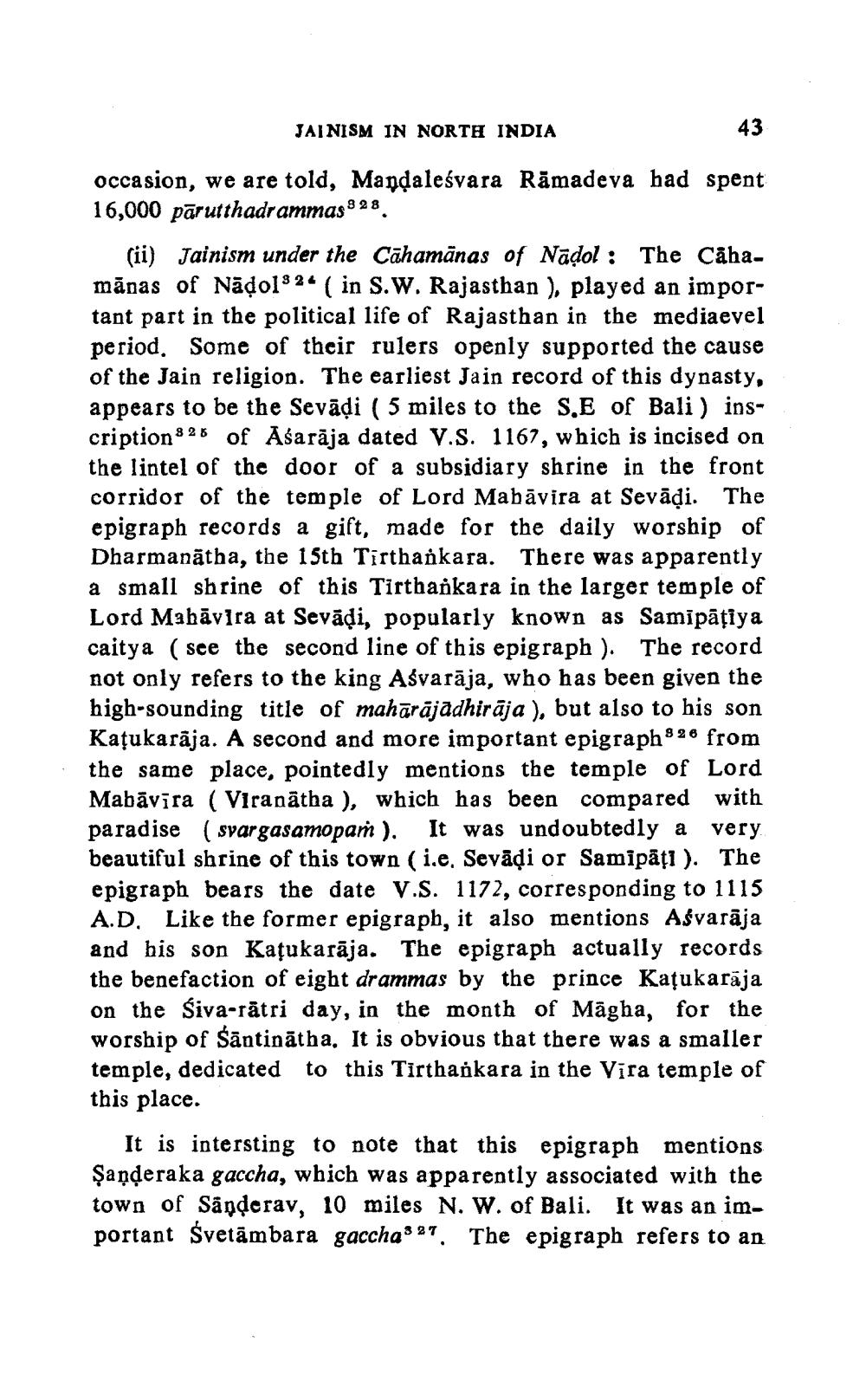________________
JAINISM IN NORTH INDIA
43
occasion, we are told, Mandaleśvara Rāmadeva had spent 16,000 pārutthadrammas 8 28.
(ii) Jainism under the Cāhamānas of Nadol : The Cahamānas of Nāļol$ 2" ( in S.W. Rajasthan ), played an important part in the political life of Rajasthan in the mediaevel period. Some of their rulers openly supported the cause of the Jain religion. The earliest Jain record of this dynasty, appears to be the Sevādi ( 5 miles to the S.E of Bali) inscription : 28 of Asarāja dated V.S. 1167, which is incised on the lintel of the door of a subsidiary shrine in the front corridor of the temple of Lord Mabāvira at Sevādi. The epigraph records a gift, made for the daily worship of Dharmanātha, the 15th Tirthankara. There was apparently a small shrine of this Tirthařkara in the larger temple of Lord Mahāvīra at Sevādi, popularly known as Samīpāțiya caitya ( see the second line of this epigraph ). The record not only refers to the king Ašvarāja, who has been given the high-sounding title of mahārājadhirāja ), but also to his son Kațukarāja. A second and more important epigraph 9 26 from the same place, pointedly mentions the temple of Lord Mabāvīra (Viranātha ), which has been compared with paradise ( svargasamopam). It was undoubtedly a very beautiful shrine of this town (i.e. Sevādi or Samipäți ). The epigraph bears the date V.S. 1172, corresponding to 1115 A.D. Like the former epigraph, it also mentions Ašvarāja and his son Katukarāja. The epigraph actually records the benefaction of eight drammas by the prince Kațukarāja on the Śiva-rätri day, in the month of Māgha, for the worship of Sāntinātha. It is obvious that there was a smaller temple, dedicated to this Tirthaikara in the Vira temple of this place.
It is intersting to note that this epigraph mentions Şaņderaka gaccha, which was apparently associated with the town of Sãoçerav, 10 miles N. W. of Bali. It was an important Svetāmbara gaccha3 27. The epigraph refers to an




